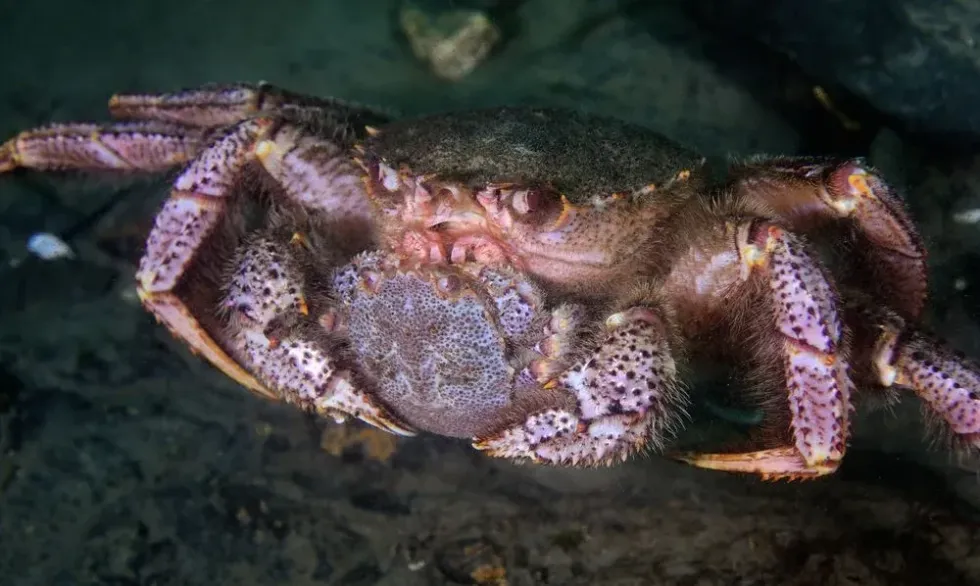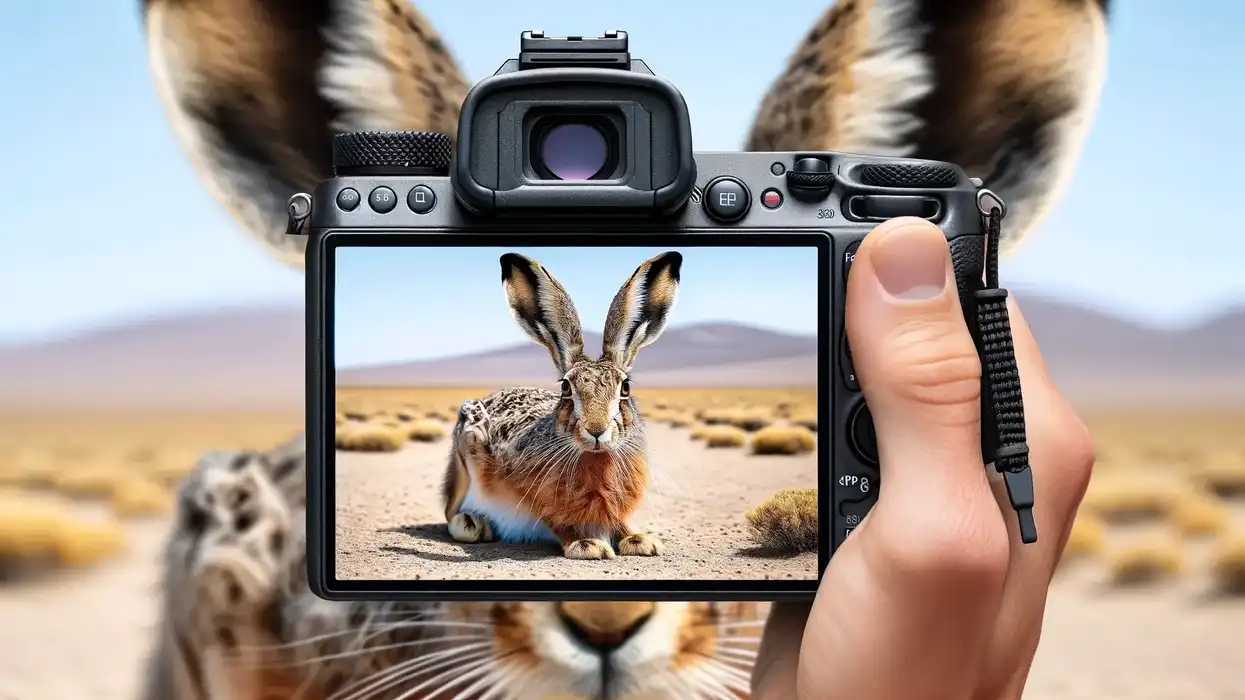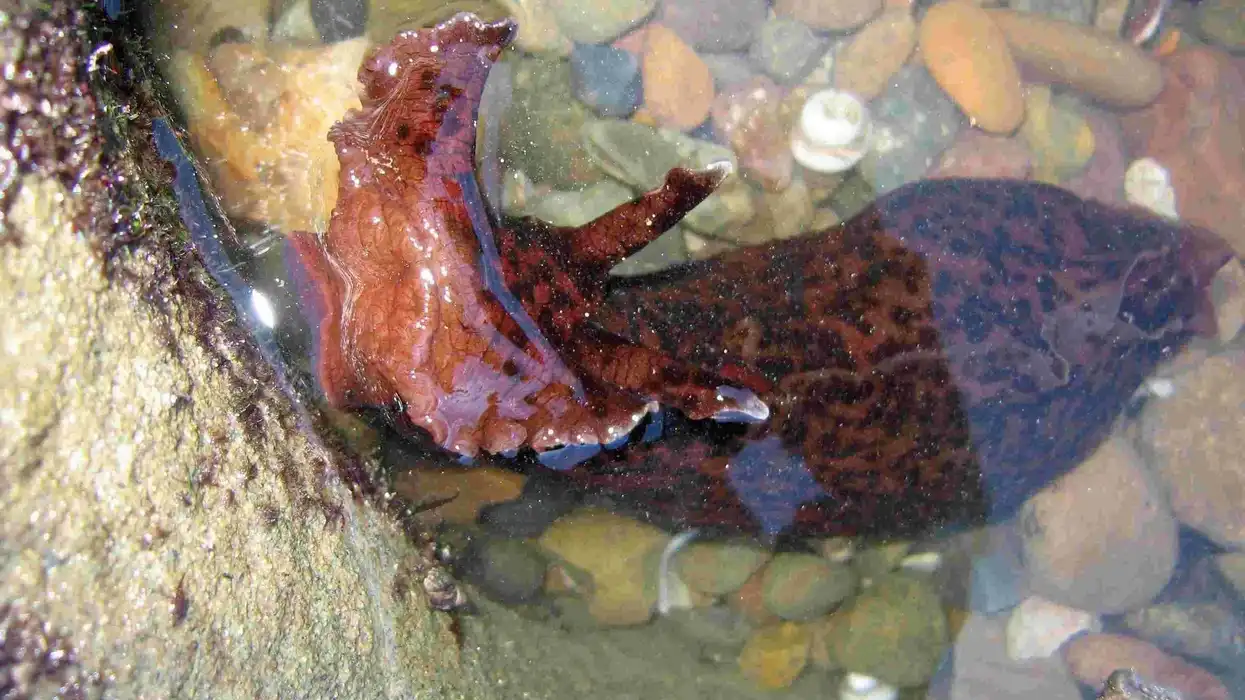A horsehair crab is considered a popular seafood in Japan and this crab is found at the bottom of Okhotsk and the western Bering Sea. Since they are found abundantly in Hokkaido, horsehair crabs are colloquially known by the name Hokkaido crab.
Horsehair crabs of Japan are a commercially important species. Many fishermen aim to catch a bulk amount of these crabs from the sea for economical profits.
The catch size used to be several thousand pounds in the 1900s and it reached a peak of 54,000,000 lb (24,493,987 kg) in the '50s. Since then the catch size has reduced due to the declining population of these crabs.
To save the horsehair species from overexploitation, numerous stock enhancement programs have been implemented throughout their range. In 2003, the catch size of the crab declined to only 4,000,000 lb (1,814,369 kg) from thousands of pounds in the previous century.
This crab forms a tasty delicacy in Japanese culture, meaning fishing is common for them. However since this crab lives at great depths, it becomes difficult for humans to catch the crab without diving into the sea. This reduces the types of threats facing horsehair crabs.
To know more facts about this tasty crab, keep on reading these facts. For similar content check out blue-king crab and sand bubbler crab facts too.
Horsehair Crab Interesting Facts
What type of animal is a horsehair crab?
A horsehair crab is a type of crab that holds a notable place in Japanese cuisine. This crab is primarily found along the Hokkaido coast of Japan and it is also known as Hokkaido crab.
What class of animal does a horsehair crab belong to?
The horsehair crab of Decapoda order and Cheiragonidae family belong to the class Malacostraca, the largest class of crustaceans including crabs and lobsters.
How many horsehair crabs are there in the world?
The exact number of horsehair crabs that are present in Japan is not known yet. However, a large drop in the catch size of horsehair crabs has been noticed currently. This suggests that large-scale commercial exploitation might have taken a toll on the population size of this crab.
Where does a horsehair crab live?
The horsehair crab is endemic to the Hokkaido coast of Japan. A large number of horsehair crabs inhabits the Okhotsk Sea and the western part of the Bering Sea in Japan. They are also found in areas around the northwest Pacific Ocean. Crab hatchlings live at the bottom of the sea as zooplankton.
What is a horsehair crab's habitat?
The horsehair crab prefers to live in the benthic environment and they live at the lowest depth of water or on the surface. The crab inhabits bottoms of shallow water.
They can live at fairly shallow depths ranging up to 1148 ft (350 m). At sea, the males prefer to live in areas with hotter water conditions while the females choose to stay in relatively colder water.
Who does horsehair crab live with?
Some crabs are solitary while others live in crab groups known as a cast. These crabs either exists on the seafloor alone and forages by themselves or they live in colonies.
At times, many crabs are observed together on land. However, there is no proper information regarding the social structure of the horsehair crab of Japan. Males and the females meet to breed, but whether they belong to the same group or not is unknown.
How long does a horsehair crab live?
The lifespan of a horsehair crab has not been determined. These crabs of Japan live at a great depths of an ocean away from the normal reach of humans. Therefore, their life is poorly studied.
How do they reproduce?
The reproductive behavior between the male and the female horsehair crab is understudied. The crab does not have any specific breeding season.
The embryo goes through nine different stages before developing into a full-grown crab. The female crab attaches its eggs to the pleopod during the incubation period and the incubation period of the crab lasts more than a year.
The hatching season of the species lasts from March to May and the hatchlings reach the bottom of the sea between June and July, depending on the temperature of the water. The exact litter size of the horsehair crab is unknown.
What is their conservation status?
The horsehair crab is Not Evaluated in the IUCN Red List and their conservation status has not been evaluated as of yet. The horsehair crab is considered to be a delicacy in Japanese cuisine.
As a result, the crab is extremely vulnerable to overfishing throughout its range and this has affected the population status of the horsehair crab considerably. In order to maintain a successful business of fisheries and to protect the crab population from decreasing further, many conservation actions and programs have been implemented.
Horsehair Crab Fun Facts
What does horsehair crab look like?
Like a hermit crab, the horsehair crab is also a small crab you can use to prepare food. The name horsehair is due to the soft and poky hairs that are present all over the crab's body.
The spiky shells provide protection to these crabs. The appendages and all the inner shells of the crab are covered by a hard outer shell.
The female crab does not have any covering over their gonophores, their main reproductive organ. The exact color of the crab is not known but normally crabs appear brownish or muddy gray in oceans.
How cute are they?
It is difficult to judge the cuteness of a crab but this horsehair crab is a tasty part of Japanese cuisine.
How do they communicate?
Crabs mainly communicate by releasing pheromones. No specific communication method has been recorded for a horsehair crab.
How big is a horsehair crab?
A horsehair crab is small in size and the length of its carapace ranges between 3.9-4.7 in (100-120 mm). They are three times smaller in size than the king crab.
How fast can a horsehair crab run?
The speed of a horsehair crab has not been quantified.
How much does a horsehair crab weigh?
A horsehair crab can weigh up to 2.2 lb (1 kg).
What are the male and female names of the species?
A male crab is called a buck while a female crab is called a jenny.
What would you call a baby horsehair crab?
A baby of a horsehair crab is referred to as zoea.
What do they eat?
The horsehair crab is carnivorous in nature. They feed three to four times within a span of 12 hours. These small crabs also show cannibalistic behavior like the large Dungeness crab.
Are they poisonous?
The horsehair crab is a wonderful delicacy of Japan. Therefore it cannot be poisonous, otherwise, people could not eat it.
Would they make a good pet?
No, this horsehair crab living in the deep sea does not make a good pet.
Did you know...
To hide from predators, horsehair crabs put dirt on themselves to camouflage. This is an innate defense mechanism present in the crab.
How many crab species are there?
Crabs constitute one of the widest families of crustaceans. At present, 6,793 living species of crabs have been recorded but there is a great possibility that this number can increase. There are many types of crabs, some live in oceans, some in freshwater, while others live on land.
How old are crabs?
Crabs are one of the oldest living creatures that are still existing on earth. They can be considered to be living fossils. Crabs appeared on earth in the Jurassic period nearly 200 million years ago. Since then, they have shown continuous evolution which has helped them to survive so many years without becoming extinct.
Here at Kidadl, we have carefully created lots of interesting family-friendly animal facts for everyone to discover! For more relatable content, check out these Black-tailed scorpion facts and Black-tailed skimmer facts for kids.
You can even occupy yourself at home by coloring in one of our red rock crab coloring pages.









